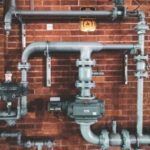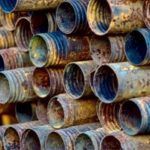Water damage is one of the most dangerous emergencies in your home. A water problem caused by a weakened roof, a storm, flood, HVAC leak, or sewage backup can be upsetting and dangerous to your property’s safety and value.
Remember that time is of the essence when repairing water damage. Allowing water to sit in your home will eventually produce odors and toxic mold. Hence, every homeowner should know the safe steps to restore water damage.
What is Water Damage Restoration?

It is the process of restoring a flooded home to its original condition. Water rushes into the house during a water disaster, causing extensive damage to the household items. In such situations, seeking help from reliable restoration operators is a must to limit the amount of damage and restore a home as a new living space. Such professionals evaluate the source of the water leak and take measures to repair and clean the affected area, saving you from trouble.
What to Consider Before Water Damage Restoration?
The first step in deciding whether to clean up the area yourself or hire water damage restoration professionals is to assess the situation and consider a few of the following factors.
1. Water Volume
If you have a small or moderate amount of water in your home, you can usually handle it on your own if you have the right tools. However, it is best to contact a professional if significant flooding is not clearing up despite your efforts.
If your neighborhood is recovering from a natural disaster or large flood, and your home has sustained significant damage, a DIY project may not be appropriate. Follow the advice of your local disaster relief authorities and leave these repairs to the professionals.
2. Source of Damage

Before you begin water damage restoration, you must determine where the water is coming from. Three different types of water can cause flooding in your house.
· Gray water: Gray water leaking from appliances such as your toilet, dishwasher, or washing machine may be slightly contaminated. However, you can clean it yourself if you take the necessary precautions.
· Blackwater: This is the most dangerous and comes from the sewer or flooding from a nearby water source, such as a river. It frequently contains health hazards and is dangerous to handle.
· Clean water: This water comes from rains or leaking pipes; it contains no harmful chemicals and is safe to handle.
3. Damage Level Finally, determine the extent of the damage. Light damage is frequently repairable by the homeowner; however, significant damage can be hazardous to repair without the assistance of a professional. For example, the damage is irreversible if flooding on an upper level has seeped through the floor and onto the ceiling.
Water Damage Restoration Tips for Your Home

1. Disconnect the Electrical Outlets
The first thing you should do if you find water damage in your home is to unplug all the electrical devices. Be careful around appliances and gas lines, even though the water damage might not be apparent now.
2. Inspect for Mold
Certain mold strains are toxic to humans and pose serious health risks. Mould can spread once it has infested a space, so keep an eye on it to avoid any health risks. You can cut out the problematic area, bag it, and dispose of it immediately for minor issues.
However, if you have a significant mold infestation, you should turn off all airflow and contact a mold expert. Mould can sometimes appear inside walls or floors, so keeping an eye on the situation throughout the restoration is critical.
3. Repair and Replacement
Water can cause havoc on both the inside and outside of your home. To avoid further damage, repair and replace the damaged items after cleaning and disinfecting the affected area. Water causes extensive damage to a wide range of properties. Hence, restoring your home to its original state is critical, regardless of its complexity. The procedure necessitates a well-planned strategy. Work with water damage restoration professionals to help you restore your home to its original condition.
4. Dry Out the Impacted Area
It’s time to dry out the affected areas after removing the standing water. Removing any remaining moisture is crucial during this process, as it is harmful and dangerous to one’s health.
Towels, dehumidifiers, mops, air conditioning, and desiccants can be used to dry the area. Desiccants absorb excess moisture, while dehumidifiers remove humidity. It is also critical to discard any damaged material at this stage.
5. Disinfect Remaining Areas
The number of germs and other residues in the water can vary depending on the type, which can be bad for your health. It is also imperative to sterilize water immediately because it can encourage the growth of mold.
After removing the damaged items, you should clean the entire area before beginning the repair procedure. Significantly, to prevent mold spores from growing, spray and wipe down the surfaces with bleach before proceeding with the repairs.
Bottomline
Water damage restoration is a complex and expensive home emergency, but it will save you from further damage and health consequences. Worse, if the damage is severe and has spread to multiple areas of your home, your water damage restoration project may be even more challenging.
If you aren’t able to complete the entire restoration project on your own, know that water damage restoration experts are only a phone call away. You can also use this guide to make the restoration or replacement project go much more smoothly, conveniently, and safely.











